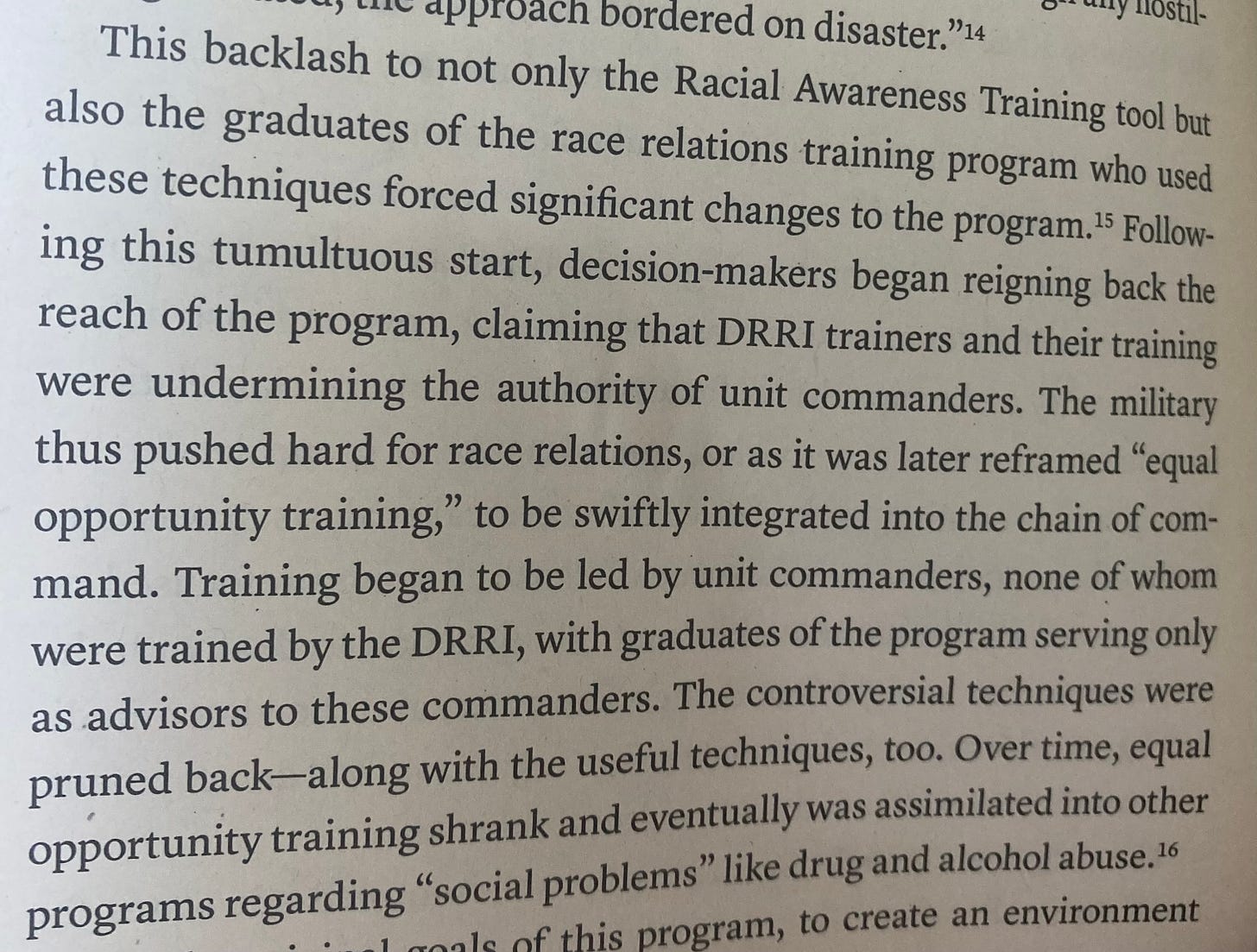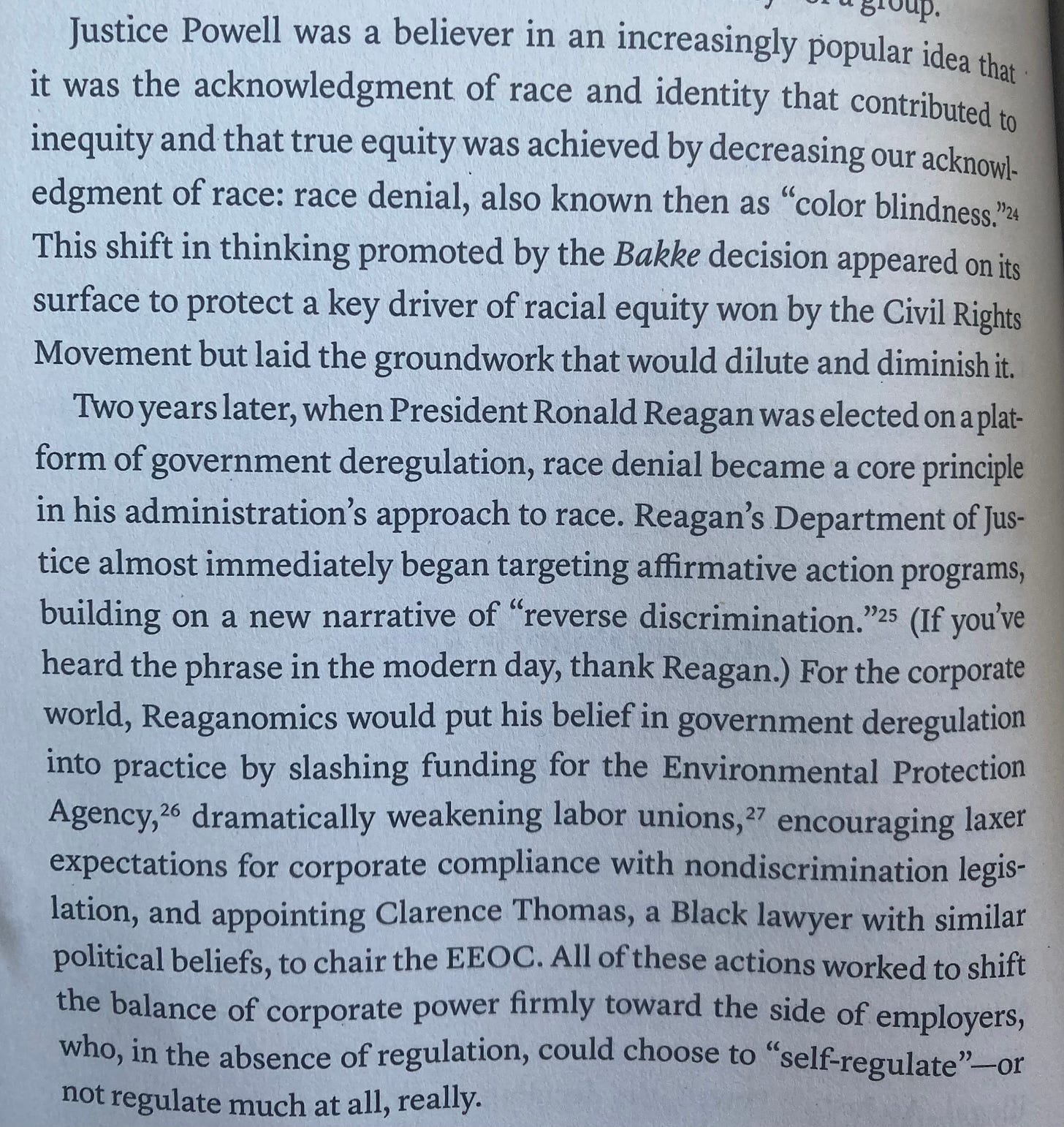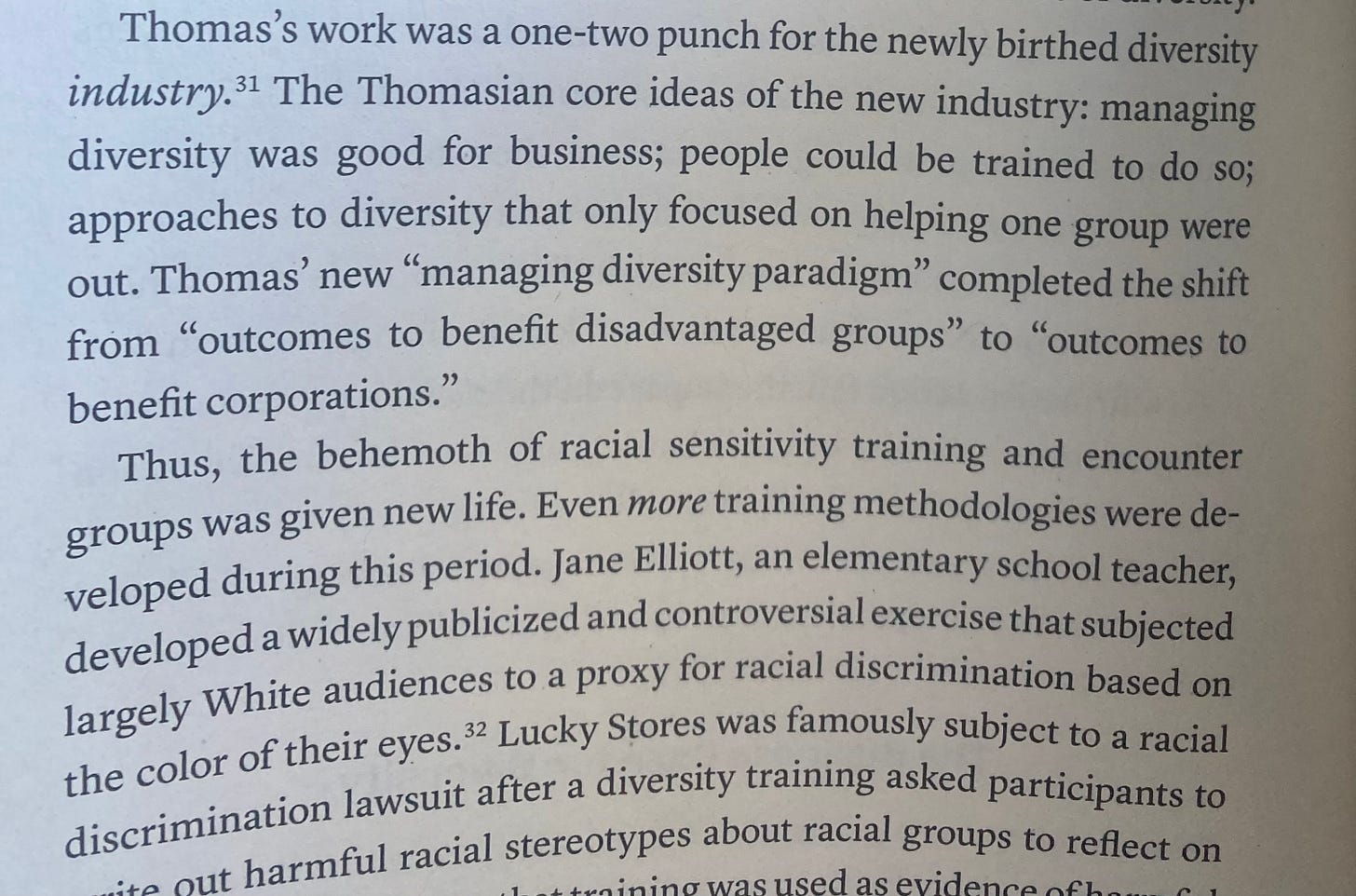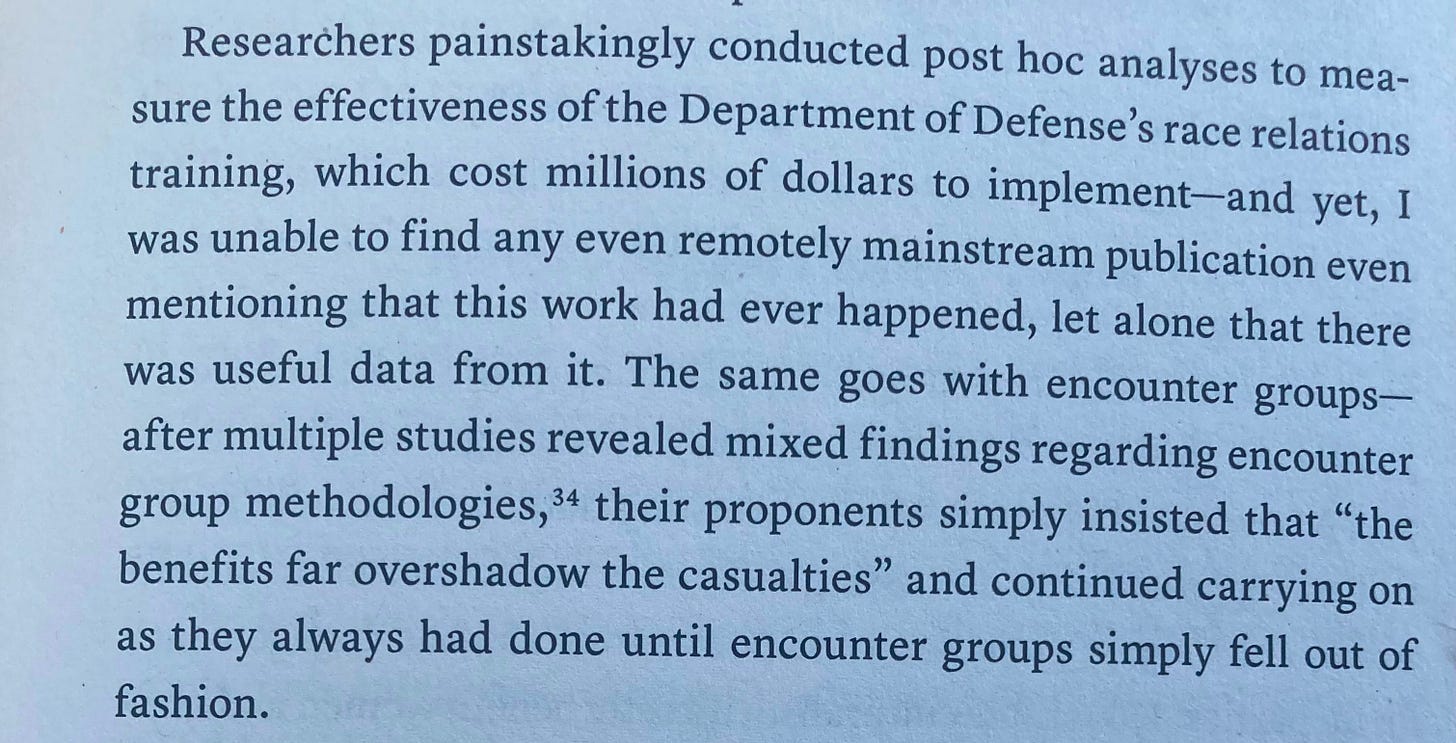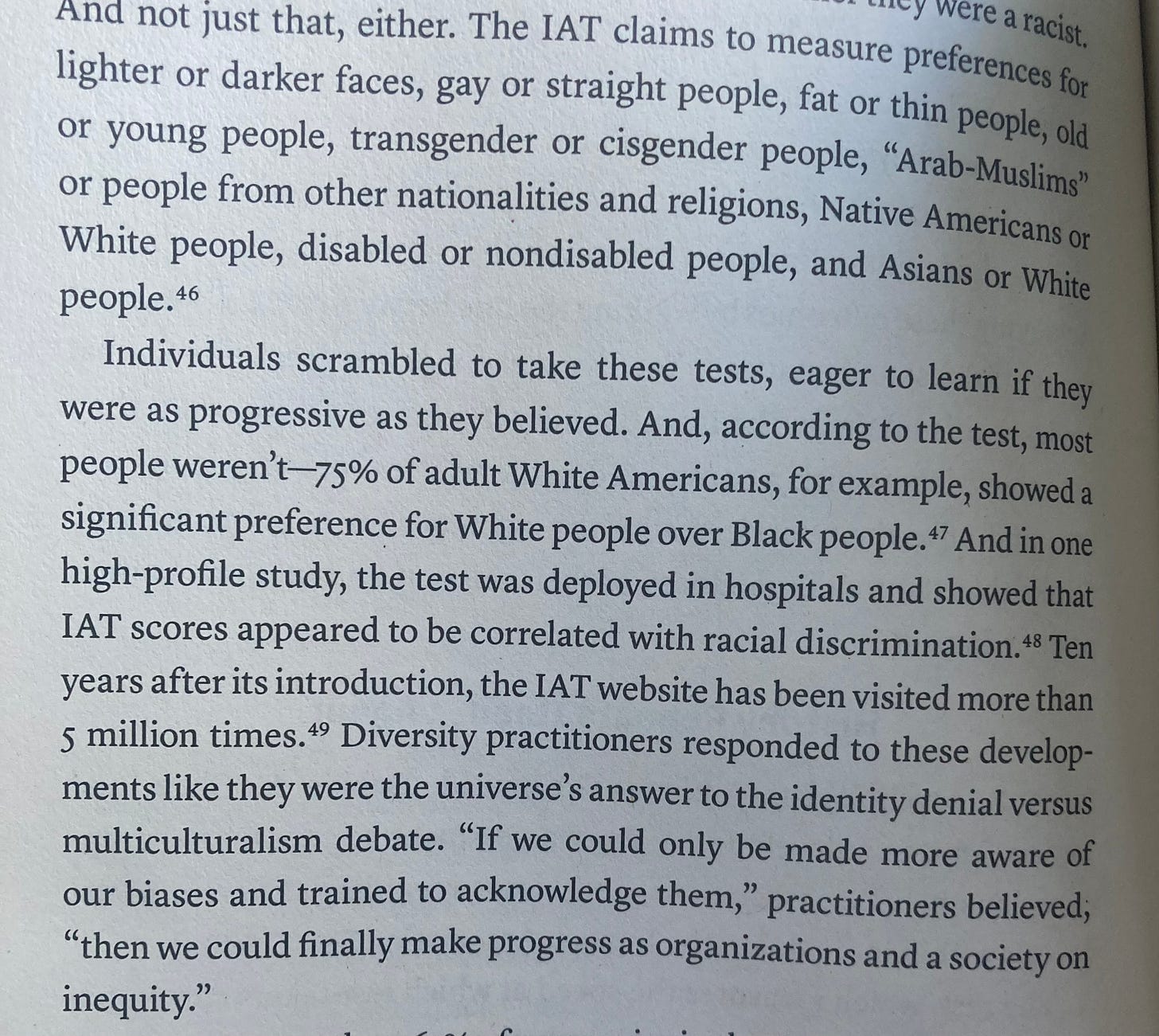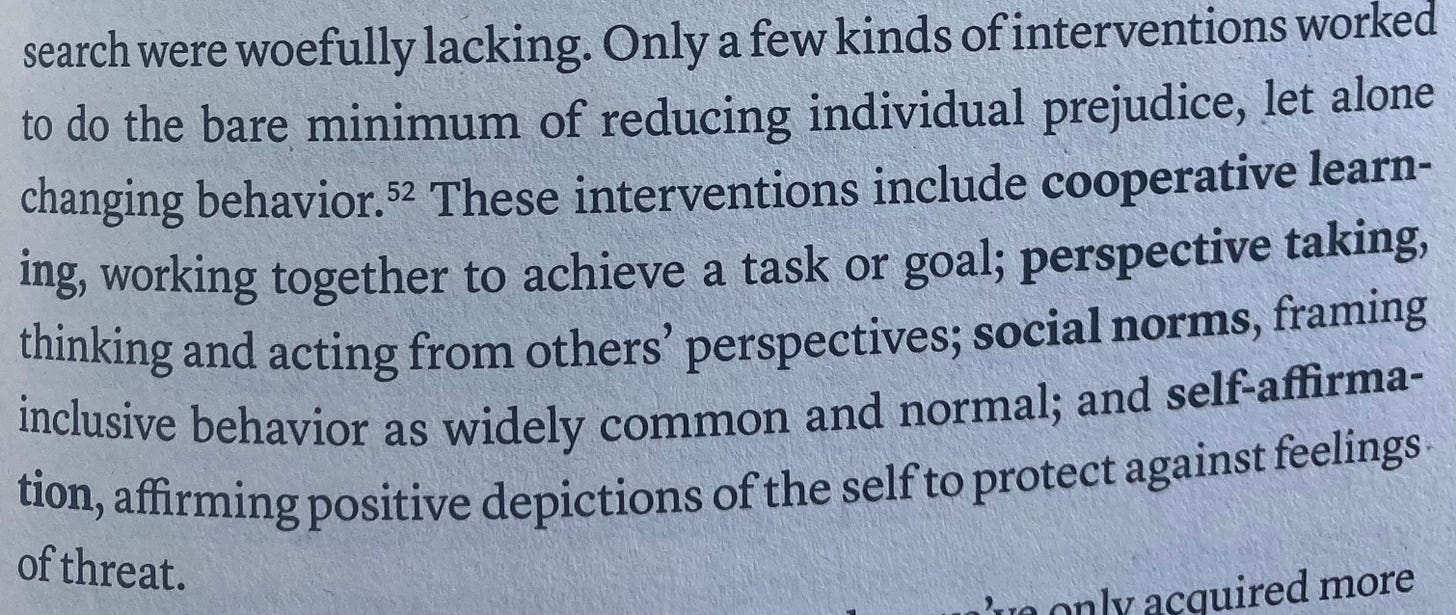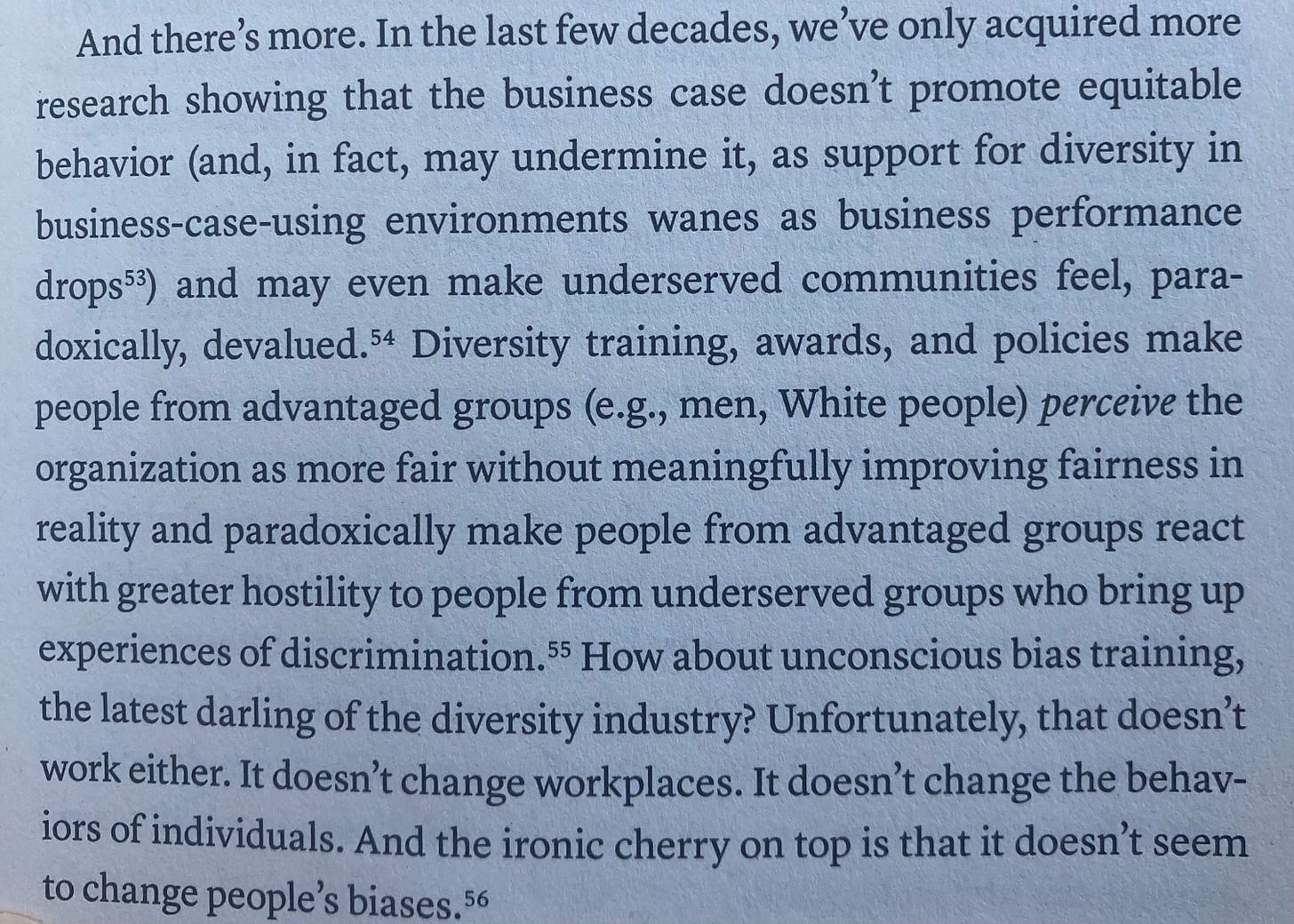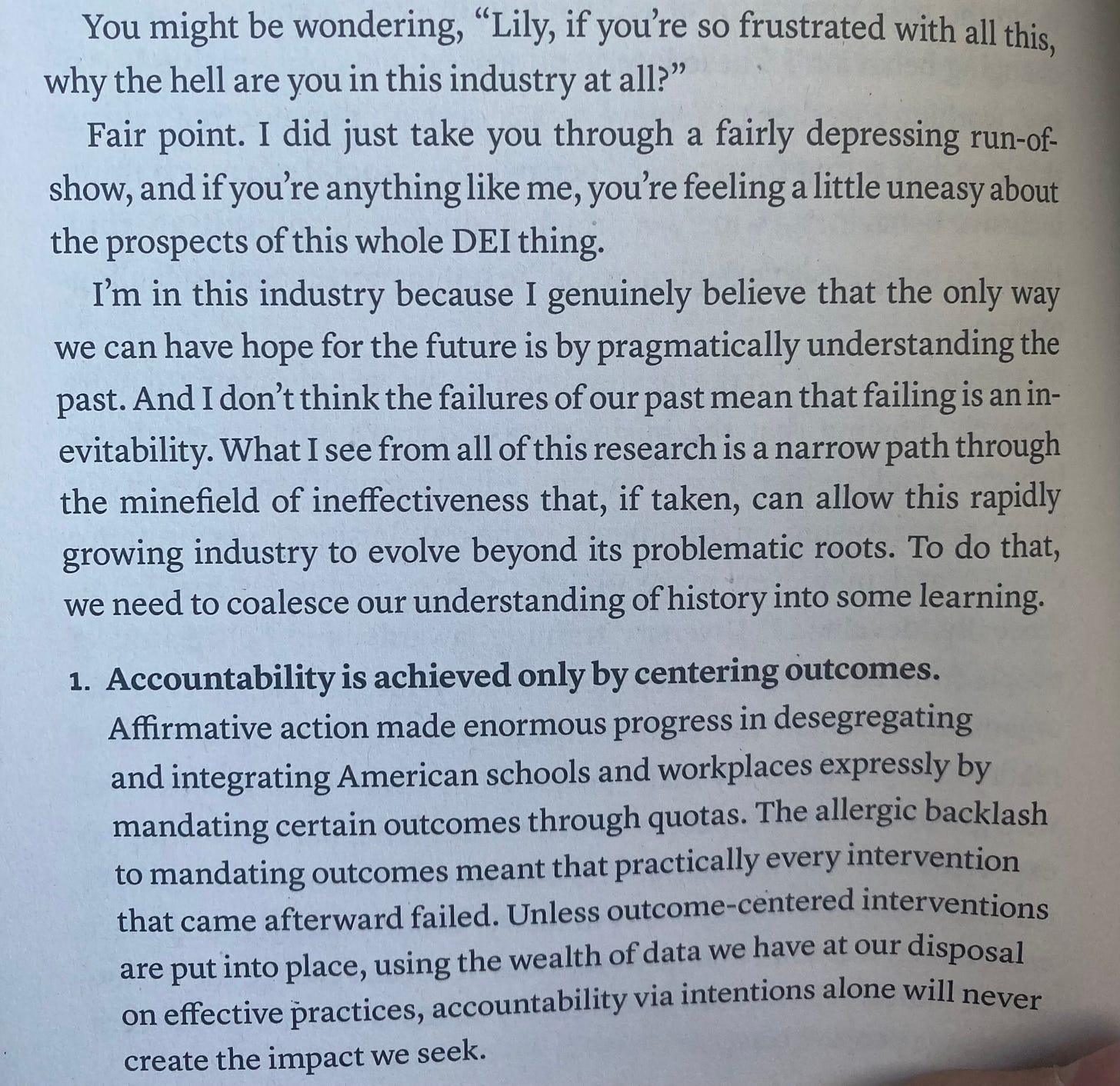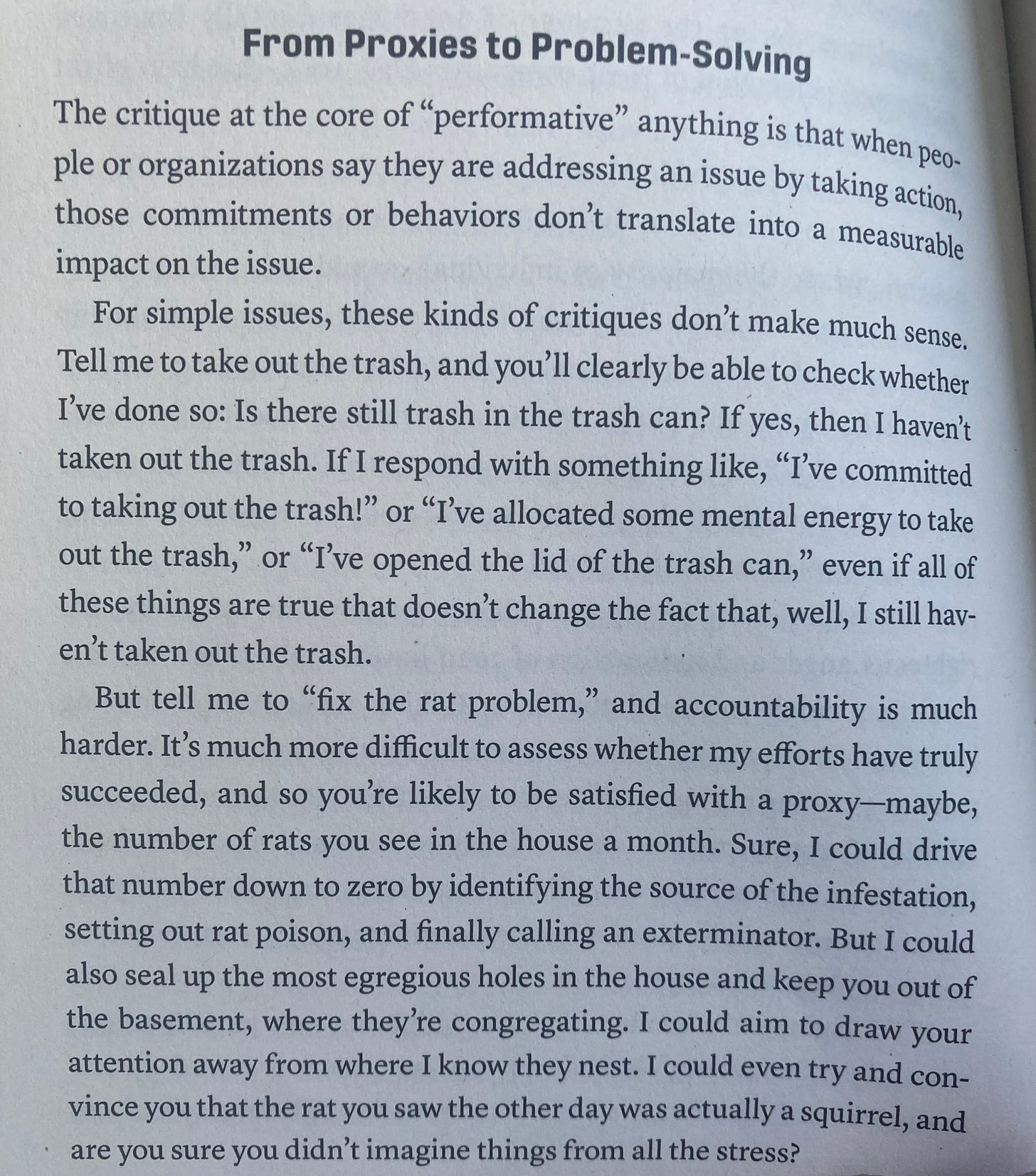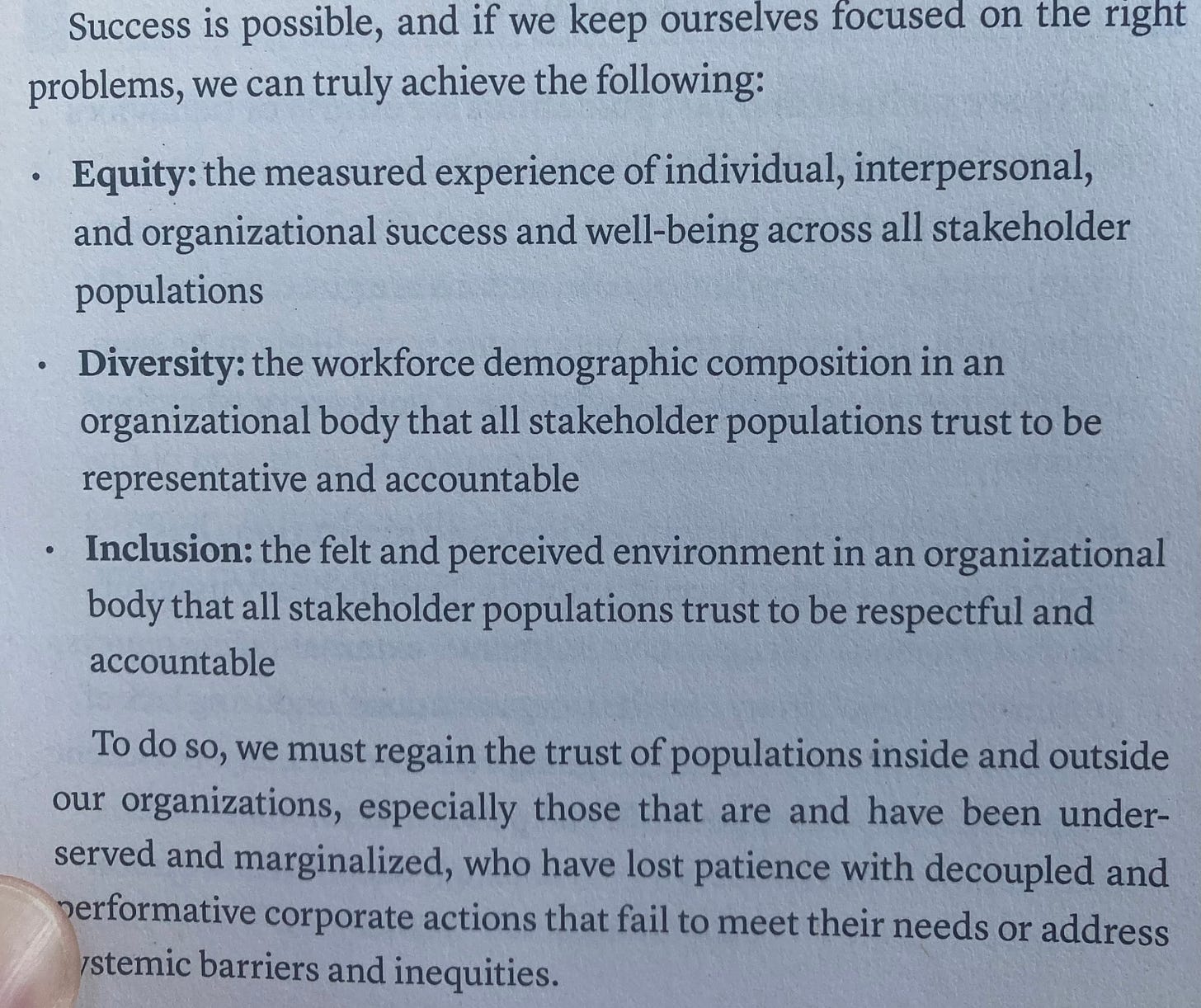This entry follows part 1 (here).
To appreciate which DEI programming is effective, a bit of a history about the origins of DEI is helpful.
Lily notes in Chapter 3 that DEI has its roots in the Civil Rights Movement, when institutions such as the U.S. military began what were known as “encounter groups”. Encounter groups broadly encourage people to engage with the conflict that emerges between majority and minority individuals within a group so that participants reflect on each others’ perspectives, reconcile those perspectives, and become more aware of the unique challenges faced by low-representation people.
The intent of these programs, including well-known examples like Racial Sensitivity Training, was to alleviate racial tension. This was often not the outcome:
At the time, there was incredible pressure to disseminate these programs. So, untested, they proliferated before anyone really knew if they would be effective. Lily notes mixed (though often unsuccessful) attempts at running these groups. As time went on, demand outpaced the expertise needed to administer them:
In other words, these efforts to achieve diversity, equity, and inclusion failed because the programs were rolled out haphazardly, and then spread widely unstandardized and untested:
After it became clear that these initiatives were not working, there was a backlash. Rather than acknowledge that racial differences exist, there was a push for “color blind” policies, and a shift towards corporations to come up with their own solutions.
This shift towards corporate autonomy and tribalized programming inspired a new approach: try to convince corporations (whose bottom line is to make money for shareholders) that managing diversity will improve productivity:
This led to a proliferation in DEI programming. But, then… little effort to integrate the data that this produced:
There were a few policies that were popular enough to be able to test their effectiveness, including race blindness and multiculturalism…
…And anyone familiar with psychology will have heard of the Implicit Association Test (IAT), which was claimed to measure unconscious racial bias:
The IAT fell short, too, largely because it is unclear what the IAT actually measures.
Lily notes that there were a few interventions that consistently (sort of) worked:
After some time, an alternative approach to corporate programming emerged called “Corporate Social Responsibility” (CSR). In short, CSR is the ideology that corporations have a responsibility outside of profit maximization to also improve social welfare.
But this didn’t do much other than to misalign corporations’ incentives. It was still unclear which DEI programming would *actually* produce better outcomes. So, many corporate attempts at DEI quickly became performative because the main incentive to improve diversity, equity, and inclusion in the work place became… to appear as if you’re working to improve DEI, even if doing so was ultimately ineffective.
In other words, the incentives for DEI intervention were subject to whichever winds were blowing at a particular company. Corporate DEI efforts needed a common goal. Then, rather than CSR, there was a growing focus on *accountability in achieving outcomes*.
Lily uses Nike as an example of how a failure to hold corporations accountable for diversity outcomes creates a cycle of performative public relations followed by a retreat from real change. Nike was the poster child and operational model for corporate DEI reform from 1998 onward. Though, now…
Although the limits of CSR were becoming clear, experts didn’t get a chance to recalibrate to the failures of the past because…
Again, there was a public demand (just as there had been in the days of the Civil Rights Movement) for companies and institutions to address the issue… even if they didn’t have great data or well-trained experts to satisfy this demand.
This is where Lily takes a breath to explain in more detail why performativity doesn’t work, and why the focus of DEI efforts must include *accountability for achieving outcomes*:
In the closing remarks of this chapter, Lily defines DEI according to the outcomes to which that one might hold organizations accountable as they strive to achieve DEI:
Again, we’re back to trust (see part 1). Lily’s argument, ultimately, is that if DEI programming is to be successful, then it must demonstrably show that 1) peoples’ success and wellbeing are being improved within that organization, and that 2) all people involved feel a similar level of trust that their unique interests are being respected, represented, and accountably achieved.
All right. Now we’re ready to see how expert, state-of-the-art DEI programming differs from its historical roots (part 3)



